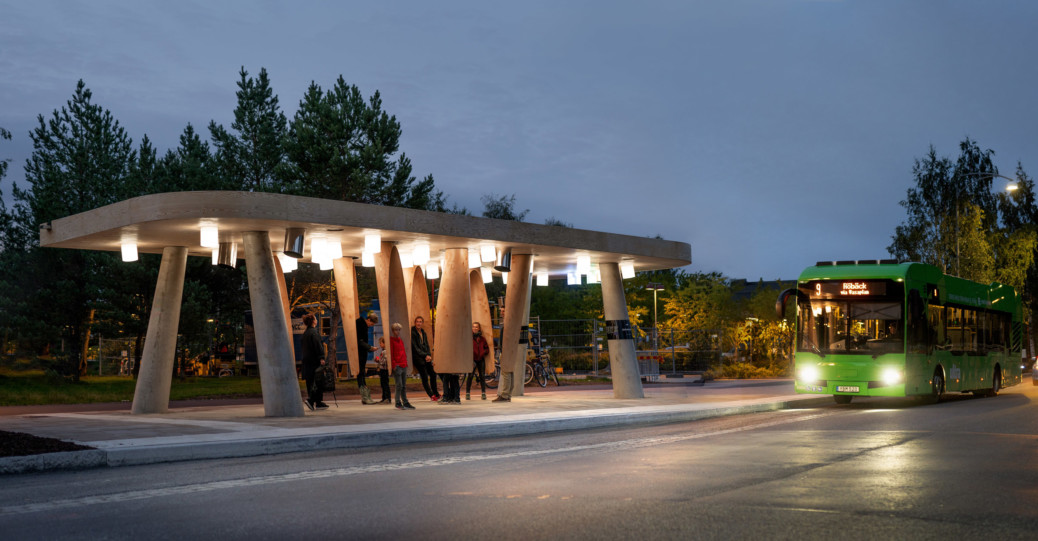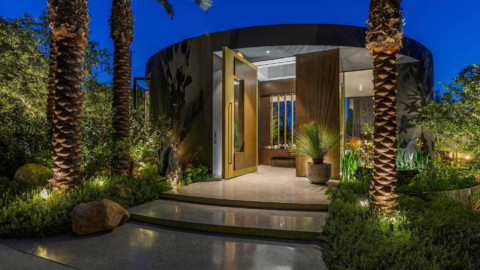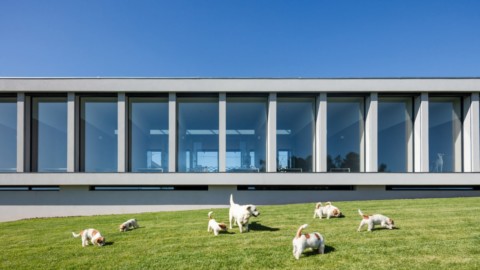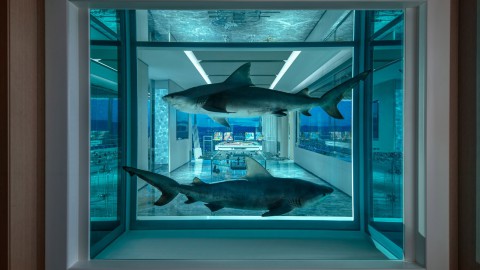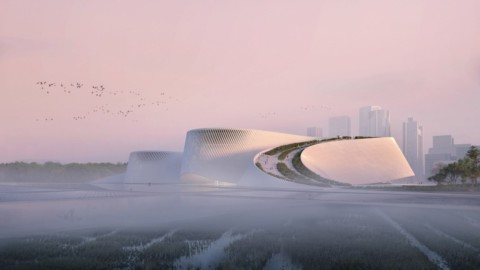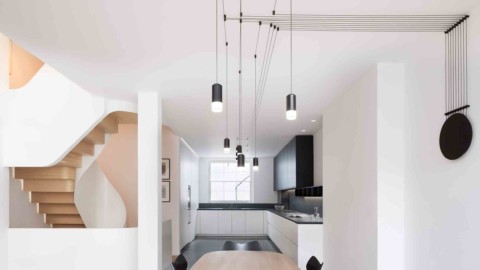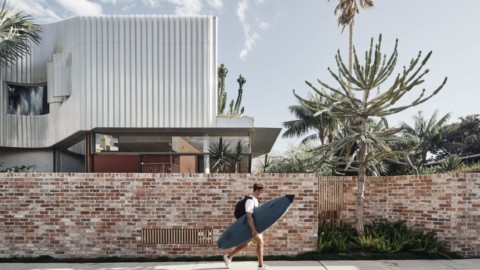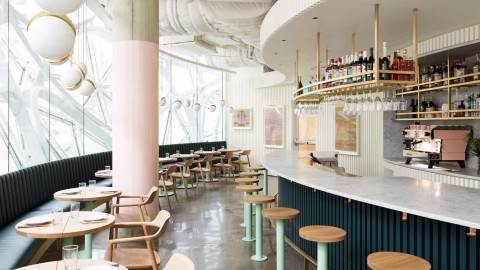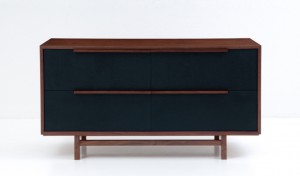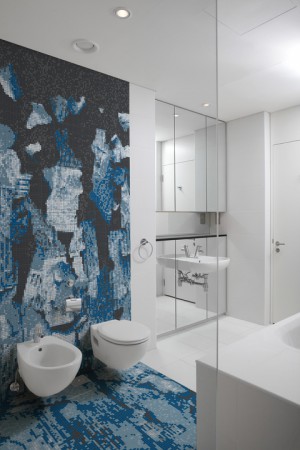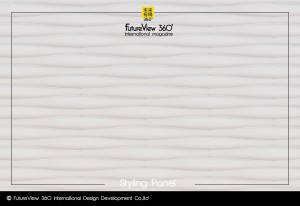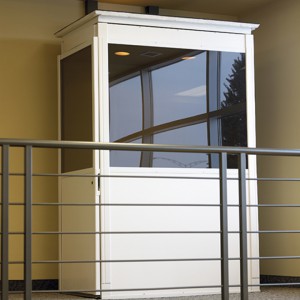Architecture studio Rombout Frieling Lab and Research Institutes of Sweden have created the Station of Being as a prototype bus stop for use in the Arctic region, which uses sound and light to alert passengers to approaching buses.
The bus stop in Umeå, Sweden, was designed to improve the waiting conditions for passengers using public transport in cold weather conditions within the Arctic region.
It uses lights and sounds to alert passengers to approaching buses so that they can relax and shelter from the wind while waiting rather than constantly having to keep a look out.
建築工作室Rombout Frieling實驗室和瑞典研究院創建了“生存之站”,作為在北極地區使用的原型公交車站,該車站使用聲光警告乘客接近的公交車。
瑞典於默奧(Umeå)的巴士站旨在改善北極地區寒冷天氣下使用公共交通工具的乘客的等候條件。
它使用燈光和聲音來警告乘客即將駛入的公交車,以便他們可以在等候時放鬆和避風,而不必經常保持警惕。
FROM:Rombout Frieling Lab creates interactive Arctic bus stop
“Waiting for the bus can be an annoying experience,” said Rombout Frieling, founder of Eindhoven studio Rombout Frieling Lab. “You have to continuously be on the lookout in order to ensure you do not miss the bus.”
“Instead, the Station of Being looks out for the bus for you – so that travellers can have ‘time for just being’, which was a clear need we identified among the commuters who work on the Science Park where the Station is located,” he told.
埃因霍溫工作室Rombout Frieling Lab的創始人Rombout Frieling說:“等公共汽車可能會很煩人。 “您必須不斷監視,以確保您不會錯過公共汽車。”
“相反,存在車站會為您尋找公交車-這樣旅行者就可以擁有’公正的時間’,這是我們在該車站所在的科學園工作的通勤者中明確的需求,” 他說。

The bus stop was commissioned by the city of Umeå as a prototype and opened during the EU Arctic Forum, which was held in the city earlier this year.
It has a “smart roof” which contains lighting and speakers that are used to create different atmospheres dependent on the bus that is approaching.
“The sounds and lights indicate the destination of the bus,” explained Frieling. “For instance, when glassy tones sound, the bus goes to the locally famous glass factory.”
該公共汽車站是受於默奧市委託作為原型的,並於今年早些時候在該市舉行的歐盟北極論壇期間開幕。
它有一個“智能車頂”,其中包含照明和揚聲器,用於根據即將到來的公交車產生不同的氣氛。
Frieling解釋說:“聲音和燈光指示公共汽車的目的地。” “例如,當發出玻璃色的聲音時,巴士便到達當地著名的玻璃廠。”
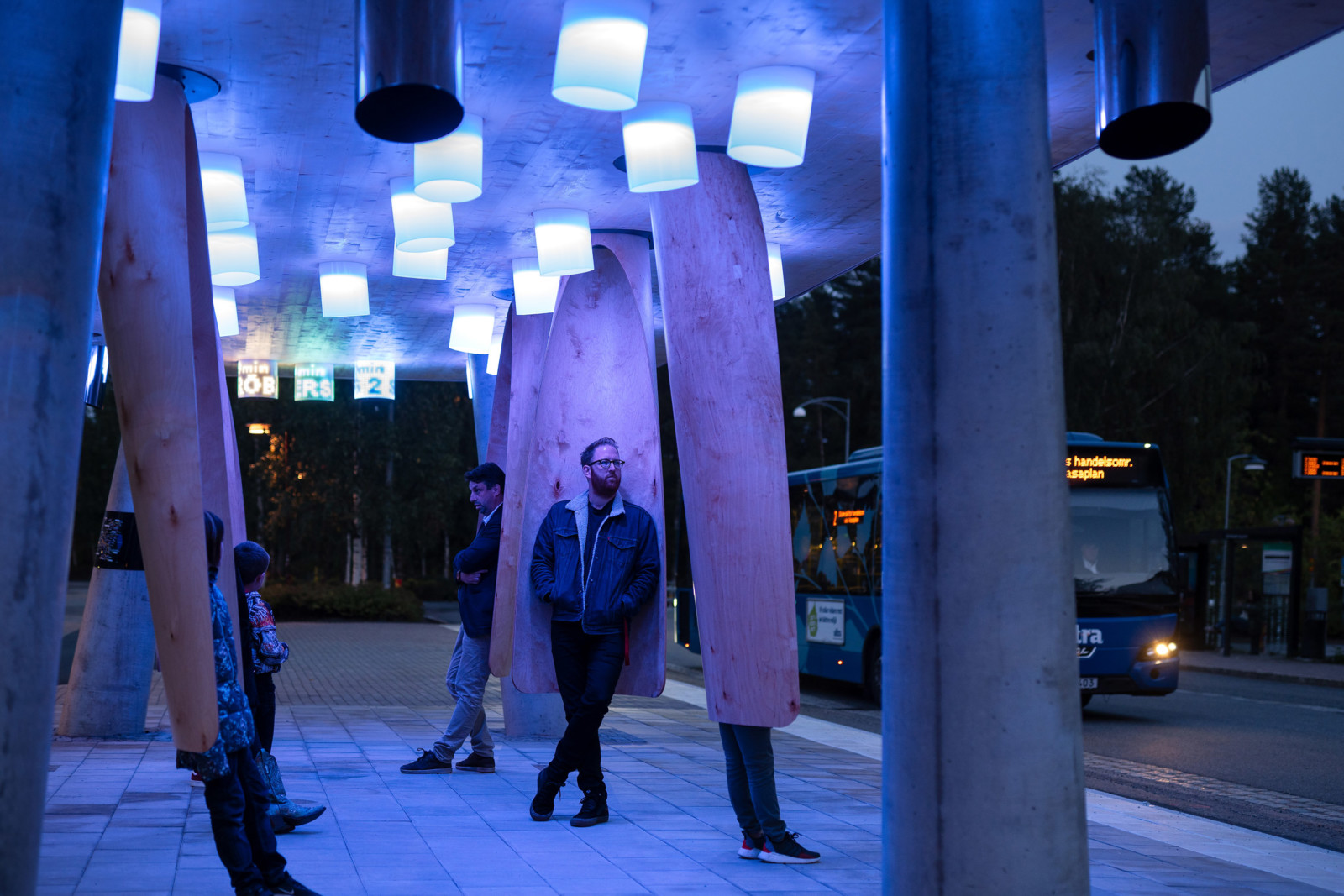
Rather than seating, the bus stop contains timber pods as Rombout Frieling Lab’s research found that people often preferred to stand, or lean, rather than sit while waiting for a bus in the cold and snowy conditions.
The rotating pods are designed to protect the passengers from the wind and provide privacy if needed.
Rombout Frieling Lab的研究發現,人們通常更喜歡站立或傾斜而不是坐在寒冷和下雪的雪地等公共汽車,而不是坐在座位上,而是用木莢裝。
旋轉吊艙旨在保護乘客免受風吹襲,並在需要時提供私密性。
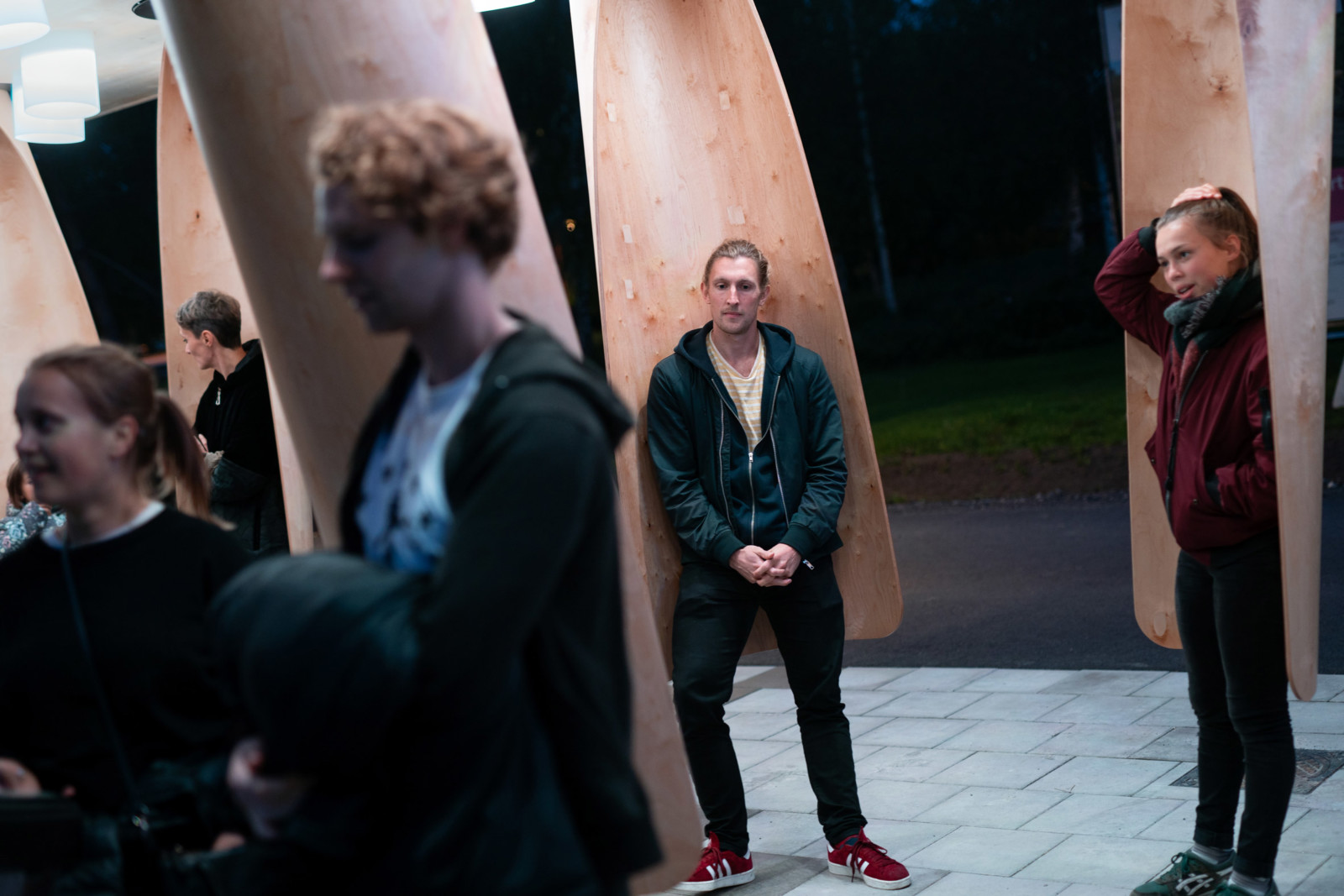
“In this work we found, for instance, that one of the reasons why people prefer their car above the bus, is the need for privacy and the need to zone off,” said Frieling.
“This is one of the reason why we invented the wooden pods that hang from the ceiling of the station – the pods allow people to lean comfortably in their own ‘cocoon’, while they can also be rotated to create different settings: social or private.”
Frieling說:“例如,在這項工作中,人們之所以喜歡在公交車上方行駛的汽車,其原因之一就是對隱私的保護和對區域的劃分。”
“這是我們發明懸掛在車站天花板上的木製吊艙的原因之一–吊艙使人們可以舒適地靠在自己的’繭’中,同時還可以旋轉它們以創建不同的環境:社交或私人 ”。
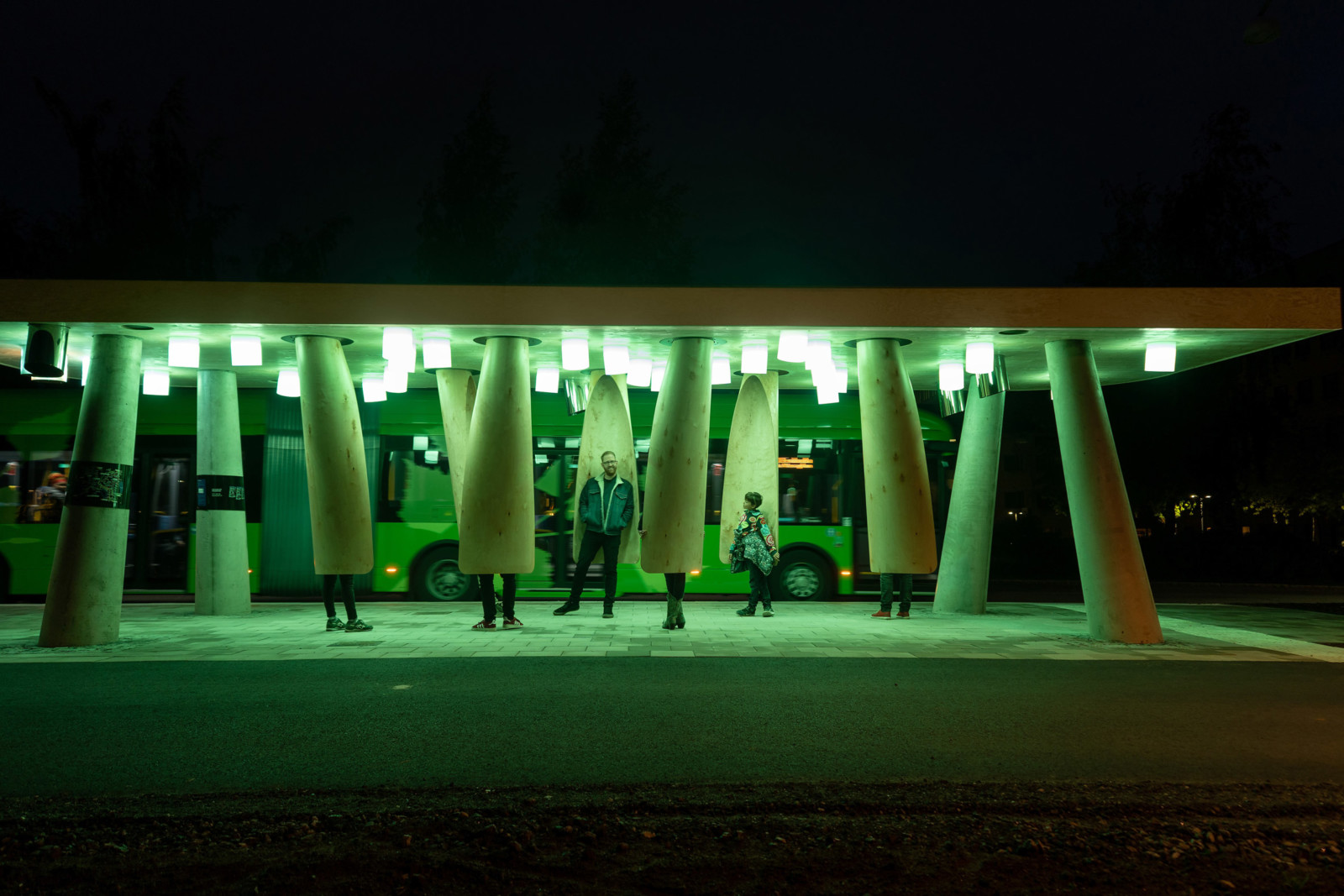
The bus stop’s roof and pods are made from local timber. They can be rotated to allow a snowplough to pass through the bus stop, so that it can easily be cleared in periods of heavy snowfall.
According to the studio it consumes the same amount of energy as a standard bus stop.
In the first couple of weeks after the bus stop’s opening the studio recorded a 35 per cent increase in usage, with many passengers taking time to relax in the structure.
巴士站的屋頂和吊艙均採用當地木材製成。 它們可以旋轉以允許除雪機通過公交車站,以便在大雪期間可以輕鬆清除。
根據工作室的說法,它消耗的能量與標準公交車站相同。
公交車站開張後的頭幾週,錄音棚的使用率錄得35%的增長,許多乘客花時間放鬆結構。
“The design is meant to get people out of their heads and into their bodies,” said Frieling.
“We have seen people meditating, people hugging in pods together and people explicitly choosing to miss their bus and stay a bit longer,” he continued.
“As in all my design projects, I find it important that people get a chance to escape the rational humdrum of the everyday, to do things differently and to engage their bodies. Some people find that fun and that is great.”
弗賴林說:“這種設計的目的是使人們擺脫頭腦,陷入困境。”
他繼續說:“我們已經看到人們在冥想,人們在豆莢中擁抱在一起,人們明確地選擇錯過公共汽車,停留更長的時間。”
“就像在我所有的設計項目中一樣,我發現讓人們有機會擺脫日常的單調乏味,做些不同的事情並吸引他們的身體非常重要。有些人發現這種樂趣,那就太好了。”
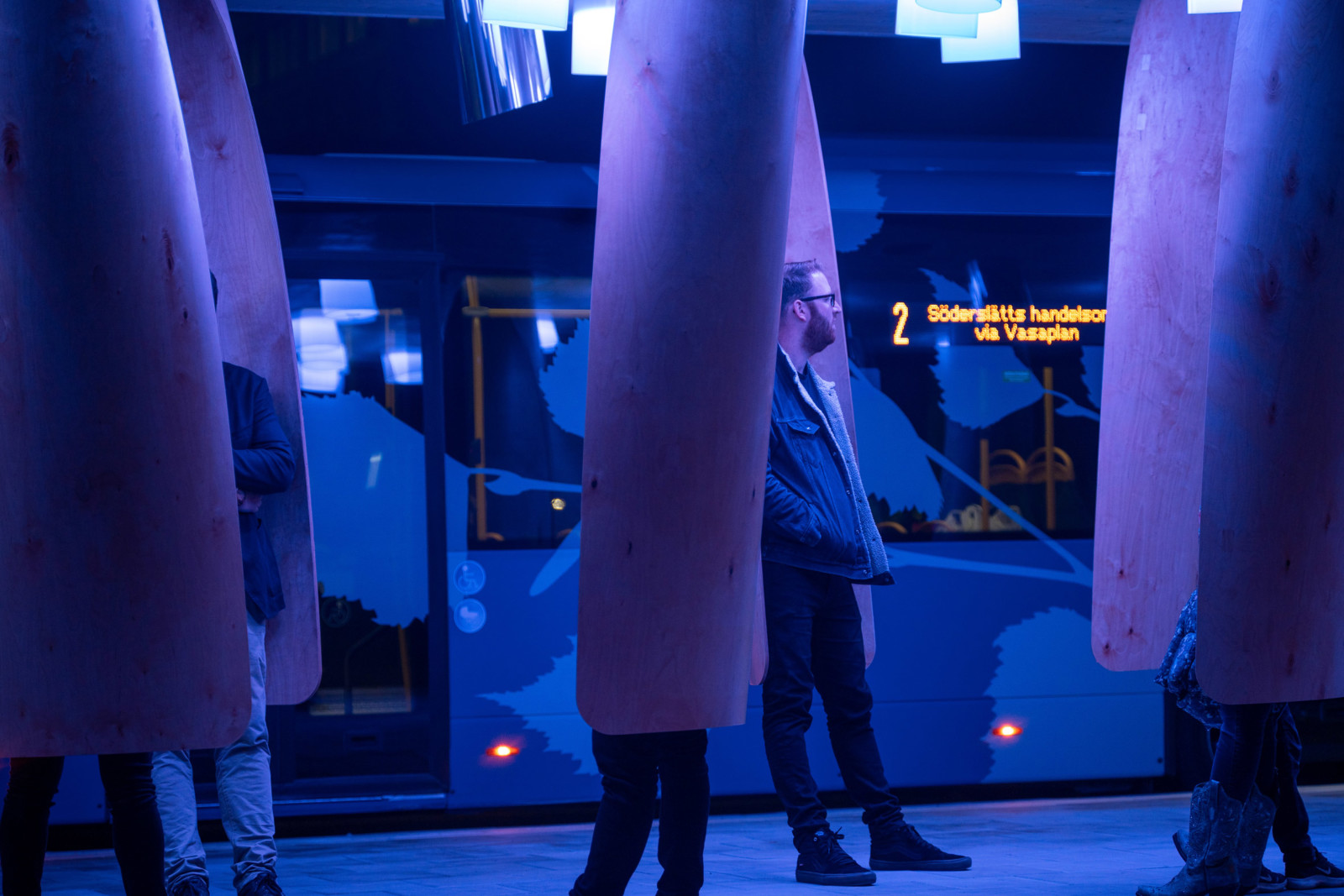
Although Station of Being was designed specifically for the Arctic region, Frieling believes that it could be adapted for use in many different climates and environments.
“The Station was designed on the basis of a series of deep insights on the needs of travellers,” he said.
“We suspect that many of these are very universal, like the need to have some transition time, and so we would love to apply innovations, for instance the spectacle of sound and light, to other areas and climates.”
Bus stops have been a favourite subject for photographers with Peter Ortner documenting 500 bus stops across former Soviet countries and Hufton + Crow capturing seven extraordinary bus shelters in Austria by architects including Sou Fujimoto, Smiljan Radić and Wang Shu.
儘管存在者站是專門為北極地區設計的,但弗賴林認為,它可以適應多種不同的氣候和環境。
他說:“車站的設計是基於對旅行者需求的一系列深刻見解。”
“我們懷疑其中許多是非常普遍的,例如需要有一定的過渡時間,因此我們很樂意將創新(例如,聲光的奇觀)應用於其他地區和氣候。”
彼得·奧爾特納(Peter Ortner)記錄了前蘇聯國家的500個公共汽車站,而哈夫頓+烏鴉(Hufton + Crow)在奧地利則由Sou Fujimoto,SmiljanRadić和Wang Shu等建築師捕獲了七個非凡的公共汽車候車亭,因此,公共汽車站一直是攝影師最喜歡的主題。
FROM:https://www.dezeen.com/2019/12/11/rombout-frieling-lab-arctic-bus-stop-umea-sweden/

